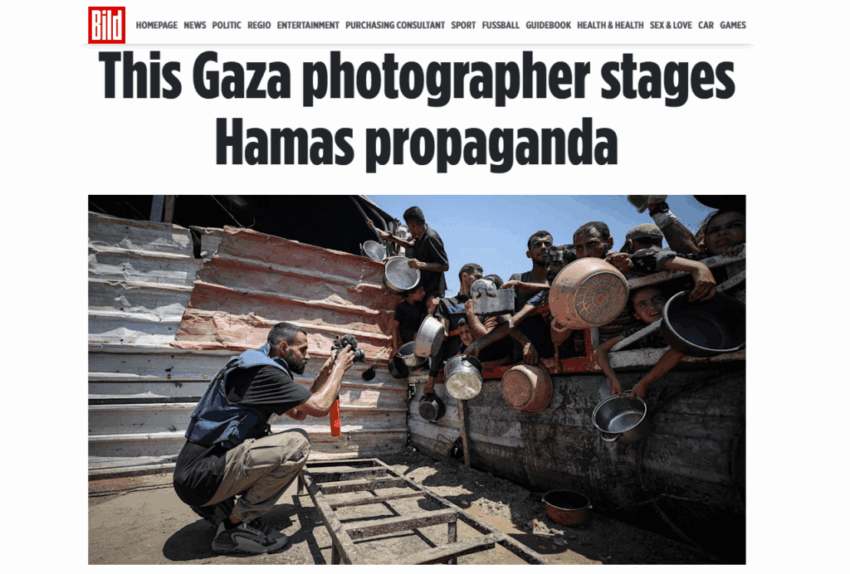“A picture may be worth a thousand words. But in Gaza, what’s outside the frame is worth much more.” – HonestReporting
“It’s time our media stops acting as Hamas’s PR firm.” – The Judean
The formerly tax-payer funded National Public Radio (NPR) and the New York Times are just two of many “news” organizations using Hamas-approved images to evoke pity and anger against Israel.
Nobody is denying that civilians are suffering in Gaza. The outrageous onslaught of propaganda, however, indicates that the media is promoting an anti-Israel narrative perpetuated by Hamas.
A Bild article (translated from German by Google) dated August 5, 2025 reveals that images of suffering in Gaza are being deliberately staged by Hamas as part of a propaganda strategy.
Media Manipulation: Propaganda’s Role in Visual Storytelling
In particular, the Bild piece focuses on photographer Anas Zayed Fteiha, who works for the Turkish news agency Anadolu and allegedly selects or poses images to emphasize women and children in distress, ignoring scenes of men receiving food. Fteiha is portrayed as an activist with anti-Israel sentiments, evidenced by his social media posts like “F*** Israel” and affiliations with pro-Palestinian groups. But regardless of his clear bias, his photos are widely distributed by major media outlets.
The following two images appear to show the same scene, but one shows the photographer.
This image at NPR is still the featured photo of an article from July 29, 2025 provocatively titled “As Gaza starves, the next generation may also endure the consequences”:

Note that the people are not the same, although one boy in the red square appears to be the same person. Additionally the red trim on the ledge on the wall is clearly the same location:

Bild explains that these images are part of a Hamas-controlled effort to manipulate Western public opinion. They also note that Hamas tightly controls image production in Gaza, and cites historical examples like staged images of Yasser Arafat to argue that such propaganda tactics are longstanding and effective.
How many Gaza images are authentic? And how many are staged?
Uncritical Reporting: Legacy Media’s Role in Spreading Propaganda
As reported at RAIR, the legacy media uncritically repeats Hamas propaganda and often cites officials from the heavily-biased United Nations. True to form, the NPR article that used the wall photo cited Ross Smith, the director of emergency preparedness and response at the U.N. World Food Programme, who said in part: “The hunger crisis in Gaza has sort of reached new and astonishing levels of desperation.” The article also cited Gaza’s Ministry of Health, aka Hamas.
Some other images that appear to be at the same wall:








One of the photos at the wall made the cover of Time Magazine.
The photographer for the Time cover is award-winning Anadolu Agency Photographer Ali Jadallah, who posts Gaza images and many “wall” photos, *always* attributing blame to Israel.
By relying on biased sources like Gaza’s Ministry of Health and the United Nations, and distributing staged images from photographers with clear anti-Israel agendas, NPR and other outlets are perpetuating Hamas’s propaganda. Bild’s exposé reveals the deliberate staging of such visuals, a tactic rooted in historical precedent, underscoring the need for greater scrutiny and independence in reporting on Gaza to ensure truth over manipulation.
The post New York Times, NPR Among Media Outlets Caught Using Hamas-Approved, Staged Gaza Images appeared first on RAIR.
Click this link for the original source of this article.
Author: Renee Nal
This content is courtesy of, and owned and copyrighted by, https://rairfoundation.com and its author. This content is made available by use of the public RSS feed offered by the host site and is used for educational purposes only. If you are the author or represent the host site and would like this content removed now and in the future, please contact USSANews.com using the email address in the Contact page found in the website menu.








